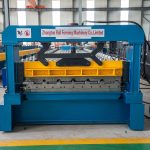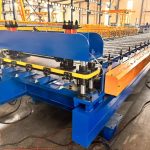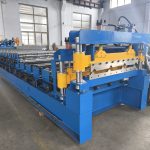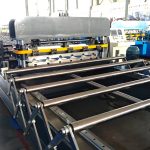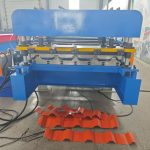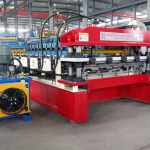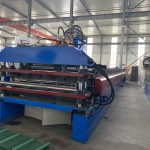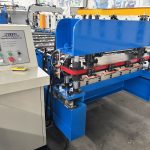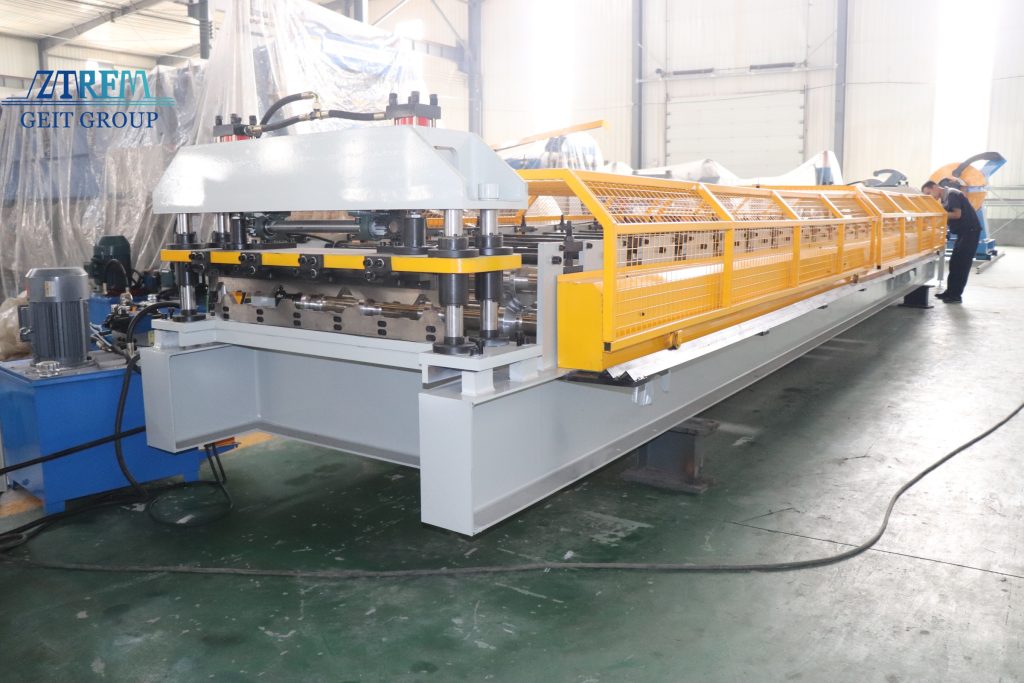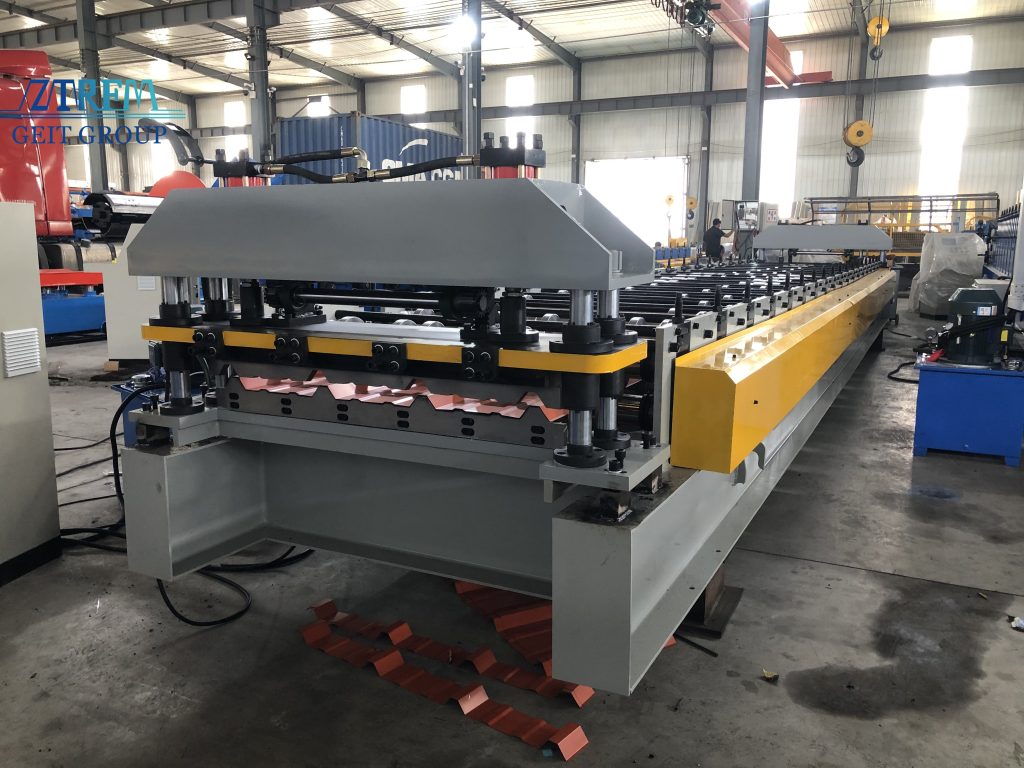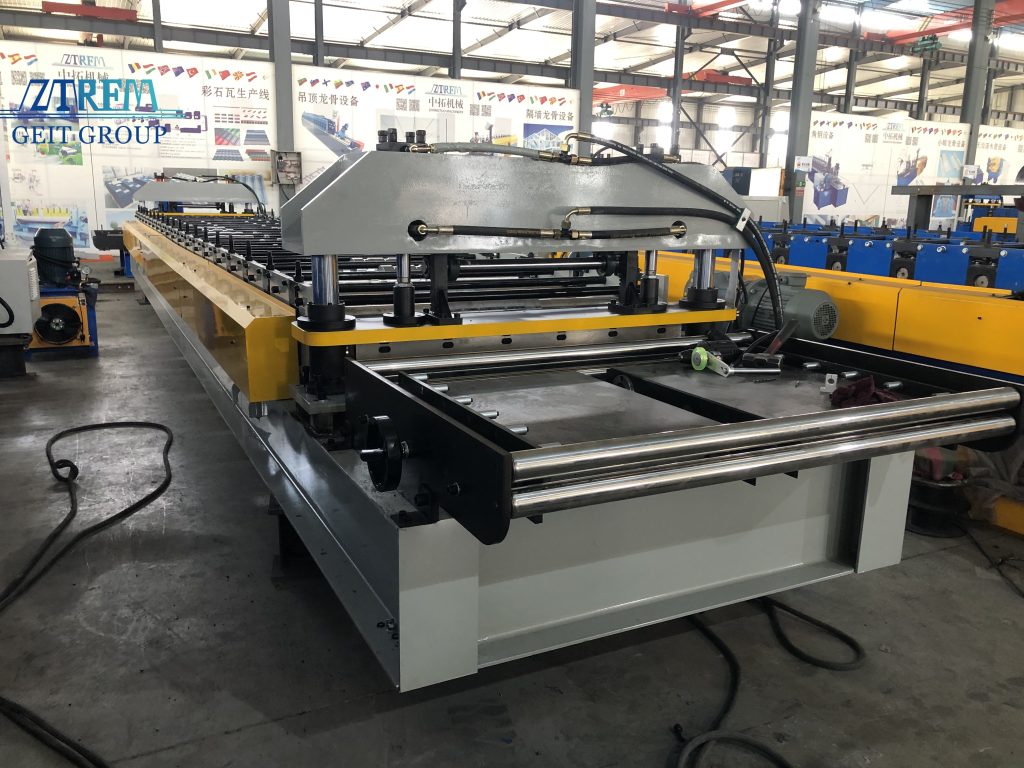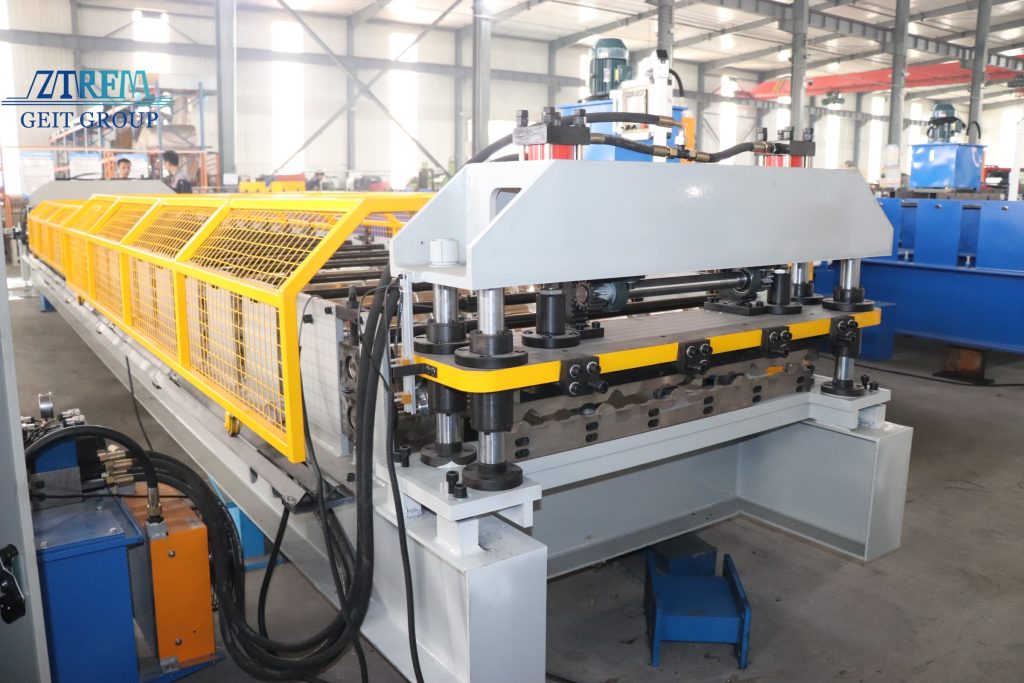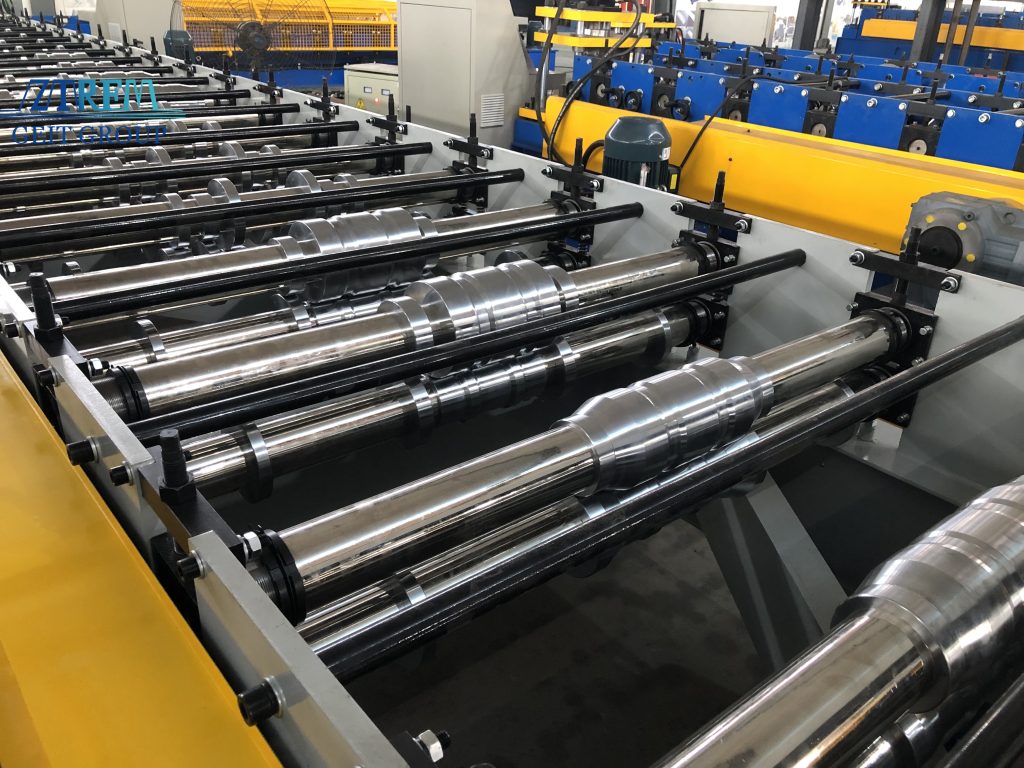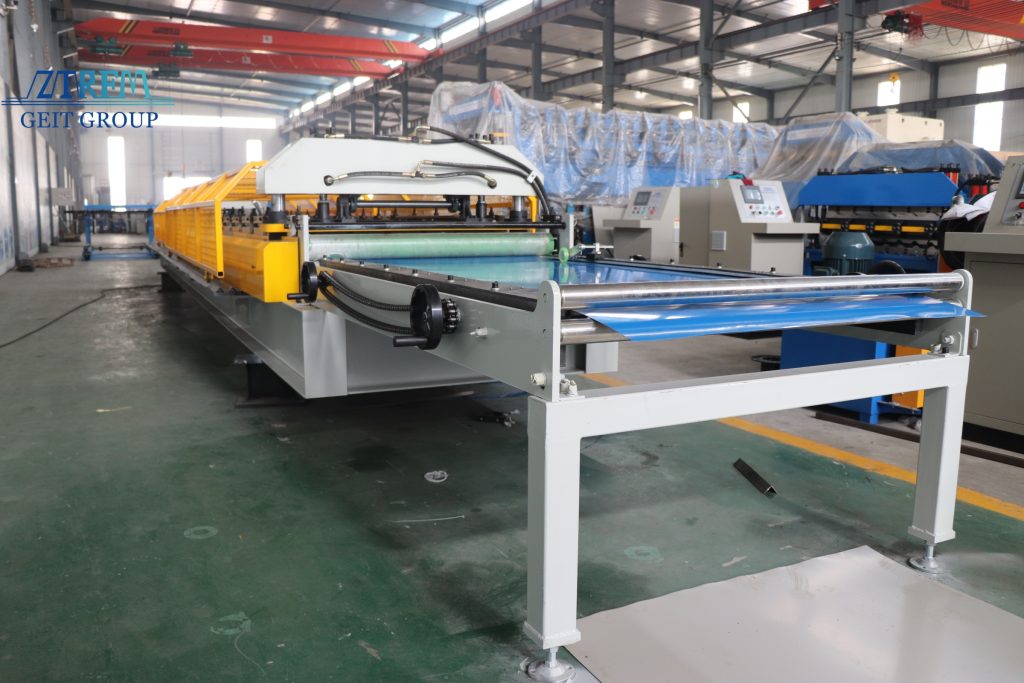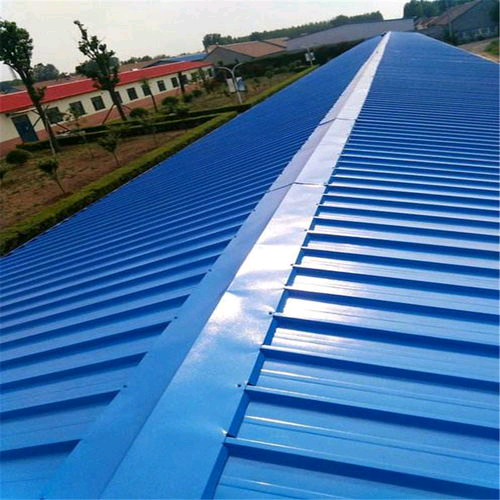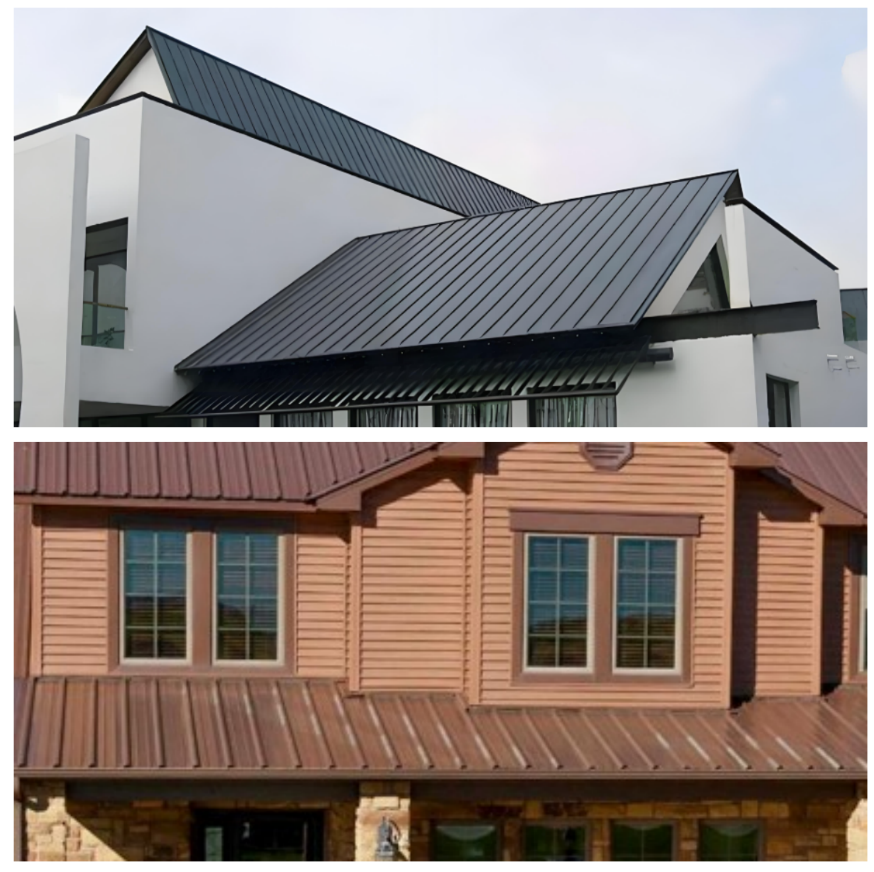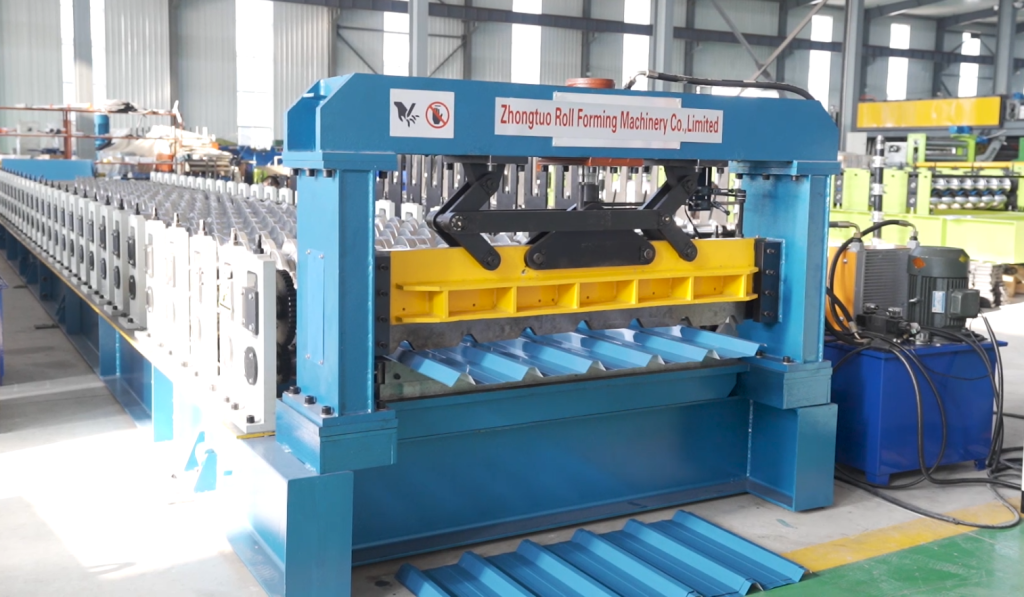Work flow of Trapezoidal roll forming machine
https://youtu.be/hEBnGzgcdxU?list=PLUcovtm6imwtQbbh6kI9DfOT3nASD7fQc
Introduction of Trapezoidal Metal Roll Forming
As a key machine in the metal building materials processing field, the trapezoidal color steel tile forming machine, characterized by automation and high efficiency, serves as the core guarantee for mass production of trapezoidal color steel tiles. Its functions, structure, and application details can be further elaborated as follows:
I. Core Functions and Processing Flow
The core of the trapezoidal color steel tile forming machine lies in adopting the “continuous roll forming” technology to gradually process flat color-coated steel plates (or galvanized steel plates and other raw materials) into profiles with a trapezoidal cross-section. The entire process requires no welding and only relies on physical rolling for forming, which not only ensures the structural strength of the plates but also avoids damage to material properties caused by high-temperature welding.
The specific process is as follows:
1. Uncoiling Stage: The raw material coils (usually with a width of 1000-1200mm) are unrolled through the uncoiler, and the tension control system adjusts the tightness of the coils in real-time to prevent deviation or wrinkling.
2. Pretreatment Stage (included in some machines): Some high-end machines are equipped with a leveling device to correct slight deformations of the plates caused by transportation and storage. If the raw materials are not pre-painted, a simple derusting or cleaning module can also be integrated to improve the subsequent forming quality.
3. Forming Stage: The plates enter the main forming machine and pass through 15-25 sets of upper and lower rolls (adjusted according to the complexity of the trapezoid). Through the shape design of the rolls, the “side ribs” and “webs” of the trapezoid are gradually pressed out from the initial flat state.
The shape difference between each set of rolls is minimal, and progressive shaping is adopted to avoid plate fracture. Finally, a stable trapezoidal cross-section is formed (the height of the trapezoid is usually 30-100mm, and the waist length and angle can be customized).
4. Cutting Stage: The formed continuous plates reach the cutting device, which automatically cuts them according to the preset length (measured in real-time by an encoder) using a hydraulic or pneumatic-driven cutter, resulting in flat and burr-free cuts.
5. Discharging and Stacking: The cut trapezoidal tiles are conveyed to the discharge table through the conveyor frame. Some machines are equipped with an automatic stacking mechanism to neatly stack them according to quantity, facilitating subsequent handling.
II. Machine Composition and Details of Key Components
– Uncoiling Device: In addition to the basic uncoiler and tension controller, large-scale machines mostly adopt a “hydraulic loading” design, which uses hydraulic push rods to easily lift heavy coils (with a single coil weight of 1-5 tons) onto the uncoiler, saving labor.
Some are also equipped with an automatic coil centering device to ensure that the plates are centered when entering the main forming machine, reducing edge wear.
– Main Forming Machine: The rolls are the core components, mostly made of 45# steel after quenching and tempering or Cr12 die steel (with a wear-resistant service life of over 1 million times).
The surface is chrome-plated or nitrided to improve wear resistance and smoothness, avoiding scratches on the surface coating of the plates.
The arrangement order of the rolls strictly follows the principle of “progressive deformation”—first pressing out the outline of the trapezoid,
then gradually refining the corner radii and compacting the joints, ensuring that the perpendicularity and flatness errors of the formed trapezoidal cross-section are controlled within ±0.5mm.
– Cutting Device: Hydraulic cutting is suitable for thick plates with a thickness of more than 3mm, featuring large cutting force and high speed (single cutting time ≤0.5 seconds). Pneumatic cutting is applicable to thin plates with a thickness of 1-2mm, with lower cost and less noise.
Some machines adopt “flying shear cutting” technology, which cuts synchronously when the plates are running continuously, avoiding downtime waiting and further improving efficiency (maximum speed up to 15-20 meters per minute).
– Control System: The mainstream adopts a combination of PLC (Programmable Logic Controller) and touch screen.
Operators can directly input parameters such as the length, quantity, and speed of trapezoidal tiles. The system can automatically store more than 100 sets of commonly used formulas, eliminating the need for repeated debugging when changing products.
High-end machines also support remote monitoring, with real-time feedback of production data (such as output and fault early warning) through IoT modules, facilitating intelligent management of factories.
III. Machine Characteristics and Advantages
– High Efficiency and Stability: In continuous production mode, a single machine can achieve a daily output of 500-1000 square meters (adjusted according to plate thickness and speed), which is more than 10 times the efficiency of traditional manual processing.
The machine is driven by a servo motor during operation, with a speed deviation controlled within ±1%, ensuring the dimensional consistency of each tile.
– Customization Adaptability: By replacing rolls of different specifications (requiring professional operation, with a replacement time of about 2-4 hours), it can produce trapezoidal color steel tiles of various trapezoidal specifications, such as “narrow-side trapezoids” (suitable for small-span roofs),
“wide-side trapezoids” (suitable for large-span workshops, enhancing load-bearing capacity), or “trapezoids with stiffeners” (improving wind resistance and pressure resistance), meeting the needs of different scenarios such as industrial plants, warehouses, and rural house reconstruction.
– Wide Material Compatibility: It can process raw materials including color-coated steel plates, galvanized plates, aluminum-magnesium-manganese alloy plates, etc., with a thickness of 0.3-3mm, and is compatible with plates of different strengths (such as Q235, Q355) and coating types (such as PE polyester, PVDF fluorocarbon coating), showing strong flexibility.
The main parameters of the machine
|
1.Formed Material
|
PPGI,GI,AI
|
Thickness:0.3-0.8mm
|
||
|
2.Decoiler
|
Hydraulic decoiler
|
will give you as free
|
||
|
3.Main body
|
Roller station
|
22rows(As your requirement)
|
||
|
Diameter of shaft
|
80mm solid shaft
|
|||
|
Material of rollers
|
45# steel, hard chrome plated on the surface
|
|||
|
Machine frame
|
350 H steel
|
|||
|
Drive
|
Chain transmission
|
|||
|
Dimension(L*W*H)
|
9500*1600*1600mm(customized)
|
|||
|
Weight
|
8.5T
|
|||
|
4.Cutter
|
Automatic
|
cr12mov material, no scratches, no deformation
|
||
|
5.Power
|
Motor Power
|
7.5KW
|
||
|
Hydraulic system power
|
4KW
|
|||
|
6.Voltage
|
380V 50Hz 3Phase
|
As your requirement
|
||
|
7.Control system
|
Electric Box
|
Customized(famous brand)
|
||
|
Language
|
Support multiple languages
|
|||
|
PLC
|
Can set batch, length, quantity, etc.
|
|||
|
18.Forming Speed
|
15-20m/min
|
The speed is adjustable
|
||
Application Scenarios and Industrial Value
Due to the mechanical properties of its trapezoidal cross-section (the bending strength is more than 30% higher than that of flat plates) and the natural drainage slope formed by its side ribs, trapezoidal color steel tiles are widely used in the construction field:
– Industrial Field: For roofs and walls of factory workshops and warehouses, which need to bear the weight of equipment or snow, the load-bearing advantage of trapezoidal tiles is obvious.
– Agricultural Field: For livestock farms and grain storage sheds, the trapezoidal structure facilitates rapid drainage, reducing corrosion caused by rainwater accumulation.
– Civil Field: For rural self-built houses and sunrooms, the machine can produce relatively thin trapezoidal tiles (with a thickness of 0.3-0.5mm), balancing economy and aesthetics.
The popularization of trapezoidal color steel tile forming machines has not only reduced labor costs (only 1-2 operators are needed for one machine) but also promoted the transformation of trapezoidal tiles from “non-standard customization” to “standardized mass production”, contributing to the efficient construction and quality control of the construction industry.

